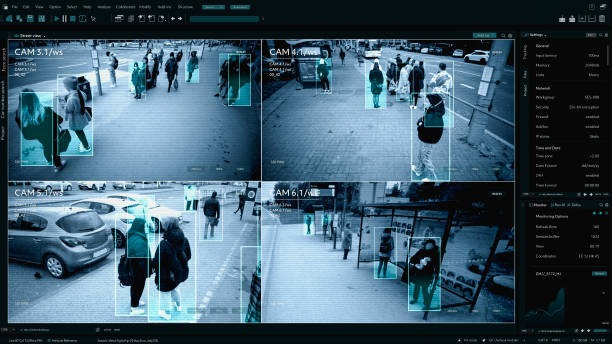Before investing in cameras for a comprehensive surveillance system, it’s important to understand exactly what you need. Knowing your specific requirements will guide you toward choosing the best technology available. Are you securing a large perimeter, or do you need detailed monitoring of a smaller area? Answering these questions will influence your choices and maximize both resolution and coverage.
Resolution Explained
Resolution is a key factor in camera selection. It defines the clarity and detail of the image captured. The higher the resolution, the more pixels you have, which results in sharper images. Let’s break down what resolution means in simple terms:
-
Standard Definition (SD): Basic clarity, sufficient for general use in smaller areas.
-
High Definition (HD): Offers greater detail and is suitable for medium-sized spaces.
-
Ultra-high definition (UHD) and 4K: These provide exceptional detail, perfect for large areas where facial recognition or license plate identification is necessary.
Understanding these options will help you match your camera’s capabilities to your specific surveillance needs.
When you think about setting up your security installation, remember that it is not just about picking any camera; it’s about strategizing for optimal performance and protection. Each decision contributes to the effectiveness of your security arrangement.
Coverage Matters
Coverage refers to the area that a camera can monitor. It’s essential to determine how much ground you need to cover to choose the appropriate camera types and positioning. Consider the following points:
-
Fixed Cameras: Ideal for small areas with specific points of interest.
-
Pan-Tilt-Zoom (PTZ) Cameras: Offers flexibility with remote directional and zoom control, great for covering extensive areas.
-
Wide-Angle Cameras: These are useful for monitoring large expanses, reducing the number of cameras required.
Balancing resolution and coverage is crucial to ensure comprehensive surveillance.
The Importance of Night Vision
Not all crimes happen during daylight, so night vision capabilities are imperative for around-the-clock surveillance. Infrared cameras are particularly useful as they can capture images in low-light conditions. Look for features like automatic switch-over from day to night modes and high infrared range to ensure seamless monitoring.
Integrating Smart Technologies
Modern security systems often integrate smart technologies to enhance surveillance efficiency. Features like motion detection, real-time alerts, and cloud storage can greatly improve how a system operates and how quickly you can respond to incidents.
-
Motion Detection: Triggers alerts only when there is activity, minimizing unnecessary recordings.
-
Real-Time Alerts: Instantly notify you of suspicious activity via your smart device. These smart features streamline the security process and help you stay connected no matter where you are.
Ensuring your property is secured with high-quality security cameras helps deter crime and provide valuable evidence if needed. Take the time to select the right tools tailored to your needs to maximize protection.
Choosing the Right Installation Location
Selecting the optimal location for your cameras is as important as choosing the right models. Think about vulnerable entry points, such as doors and windows, and wider areas that require monitoring. Install cameras at a height that prevents tampering while ensuring optimal visibility. It’s essential that each camera complements others in the system to avoid blind spots.
Wired vs. Wireless Cameras
When it comes to installation, a key consideration is whether to go with wired or wireless cameras. Both options have their pros and cons. Let’s explore them:
-
Wired Cameras: These offer a stable connection and are less susceptible to interference. However, they require more complex installation with cables and outlets.
-
Wireless Cameras: Easier to install and offer flexibility in camera positioning.
They depend on the strength of the Wi-Fi network and may require frequent battery changes. Understanding the trade-offs will help you decide which type best suits your surveillance requirements.
Weatherproofing Your System
Outdoor cameras must withstand various weather conditions. Look for cameras that are rated for weather resistance to ensure they continue functioning in rain, snow, or harsh sunlight. The Ingress Protection (IP) rating will give you an idea of how well the camera can handle the elements. Also, consider features like anti-vandalism casing for added protection.
The Role of Audio Capabilities
While video often takes center stage, audio capabilities can be valuable in a comprehensive surveillance system. Cameras with in-built microphones can capture important sounds, such as voices or breaking glass. Two-way audio systems allow communication with individuals at the location, which adds an extra layer of security and convenience.
Data Storage and Management
Data storage is an important aspect of a comprehensive surveillance system. Cloud storage offers expansive storage capacity and easy access to footage. However, local storage options, such as internal hard drives, may offer superior data privacy and reliability. Evaluate your storage needs and choose a system that offers the right balance between accessibility and security.
Maintaining and Upgrading Your System
Like any technology, maintenance is key to ensuring longevity and optimal performance. Regular lens cleaning, testing, and software updates can keep your system running smoothly. As technology advances, stay open to upgrades that can improve surveillance efficiency and expand your system’s capabilities.
If you’re looking for a guide to identify the right surveillance system, you can find detailed resources online. Many websites provide comparisons and insights into different camera types and technologies. For a deeper understanding, you can click here to explore various options and make informed decisions effectively.
Final Thoughts
In conclusion, maximizing resolution and coverage involves understanding your unique surveillance needs, selecting appropriate features, and positioning cameras wisely. By considering all aspects, from image clarity to smart features, you can build a system that offers comprehensive protection for your property. Investing in the right cameras and maintaining your system will provide peace of mind and security for years to come.



